
半导体物理性能手册:第3卷(下)
正版 半导体物理性能手册 第3卷(下)
¥ 82.8 6.0折 ¥ 138 全新
仅1件
北京房山
认证卖家担保交易快速发货售后保障
作者Sadao Adachi 著
出版社哈尔滨工业大学出版社
出版时间2014-04
版次1
装帧平装
货号E
上书时间2024-05-02
- 在售商品 暂无
- 平均发货时间 15小时
- 好评率 暂无
- 店主推荐
- 最新上架
商品详情
- 品相描述:全新
- 正版库存书非二手无翻阅
- 商品描述
- E36-22
图书标准信息
- 作者 Sadao Adachi 著
- 出版社 哈尔滨工业大学出版社
- 出版时间 2014-04
- 版次 1
- ISBN 9787560345192
- 定价 138.00元
- 装帧 平装
- 开本 16开
- 纸张 胶版纸
- 页数 217页
- 【内容简介】
- The progress made in physics and technology of semiconductors depends main.ly on three families of materials: the group-IV elemental,Ⅲ-Ⅴ, and Ⅱ-Ⅵ compound semiconductors.Almost all ⅡⅥ compound semiconductors crystallize either in the zincblende or wurtzite structure.The first research papers on Ⅱ-Ⅶ compound semiconductors date back to the middle of the nineteenth century.In the ensuring hundred years extensive literature has been accumulated as much research and development works are being carried out on these compound semiconductors.At present, the Ⅱ-Ⅵ compound semiconductors are widely used as photodetectors, x-ray sensors and scintillators, phosphors in lighting, displays, etc.New applications are continuously being proposed.Thus, it seems to timely bring together the most up-to-date information on the material and semiconducting properties of Ⅱ-Ⅵ compound semiconductors.
- 【目录】
-
Preface
Acknowledgments
Contents of Other Volumes
10 Cubic Cadmium Sulphide (c—CdS)
10.1 Structural Properties
10.1.1 Ionicity
10.1.2 Elemental Isotopic Abundance and Molecular Weight
10.1.3 Crystal Structure and Space Group
10.1.4 Lattice Constant and Its Related Parameters
10.1.5 Structural Phase Transition
10.1.6 Cleavage Plane
10.2 Thermal Properties
10.2.1 Melting Point and Its Related Parameters
10.2.2 Specific Heat
10.2.3 Debye Temperature
10.2.4 Thermal Expansion Coefficient
10.2.5 Thermal Conductivity and Diffusivity
10.3 Elastic Properties
10.3.1 Elastic Constant
10.3.2 Third—Order Elastic Constant
10.3.3 Young's Modulus, Poisson's Ratio, and Simila
10.3.4 Microhardness
10.3.5 Sound Velocity
10.4 Phonons and Lattice Vibronic Properties
10.4.1 Phonon Dispersion Relation
10.4.2 Phonon Frequency
10.4.3 Mode Gruneisen Parameter
10.4.4 Phonon Deformation Potential
10.5 Collective Effects and Related Properties
10.5.1 Piezoelectric Constant
10.5.2 Frohlich Coupling Constant
10.6 Energy—Band Structure: Energy—Band Gaps
10.6.1 Basic Propertie
10.6.2 Eo—Gap Region
10.6.3 Higher—Lying Direct Gap
10.6.4 Lowest Indirect Gap
10.6.5 Conduction—Valley Energy Separation
10.6.6 Direct—Indirect—Gap Transition Pressure
10.7 Energy—Band Structure: Electron and Hole Effective Masses
10.7.1 Electron Effective Mass: Γ Valley
10.7.2 Electron Effective Mass: Satellite Valley
10.7.3 Hole Effective Mass
10.8 Electronic Deformation Potential
10.8.1 Intravalley Deformation Potential: F Poin
10.8.2 Intravalley Deformation Potential: High—Symmetry Points
10.8.3 Intervalley Deformation Potential
10.9 Electron Affinity and Schottky Barrier Height
10.9.1 Electron Affinity
10.9.2 Schottky Barrier Height
10.10 Optical Properties
10.10.1 Summary ofOptical Dispersion Relations
10.10.2 The Reststrahlen Region
10.10.3 At or Near the Fundamental Absorption Edge
10.10.4 The Interband Transition Region
10.10.5 Free—Carrier Absorption and Related Phenomena
10.11 Elastooptic, Electrooptic, and Nonlinear Optical Properties
10.11.1 Elastooptic Effect
10.11.2 Linear Electrooptic Constant
10.11.3 Quadratic Electrooptic Constant
10.11.4 Franz—Keldysh Effect
10.11.5 Nonlinear Optical Constant
10.12 Carrier Transport Properties
10.12.1 Low—Field Mobility: Electrons
10.12.2 Low—Field Mobility: Holes
10,12.3 High—Field Transport: Electrons
10.12.4 High—Field Transport: Holes
10.12.5 Minority—Carrier Transport: Electrons in p—Type Materials
10.12.6 Minority—Carrier Transport: Holes in n—Type Materials
10.12.7 Impact Ionization Coefficient
11 Wurtzite Cadmium Sulphide (w—CdS)
11.1 Structural Properties
11.1.1 Ionicity
11.1.2 Elemental Isotopic Abundance and Molecular Weight
11.1.3 Crystal Structure and Space Group
11.1.4 Lattice Constant and Its Related Parameters
11.1.5 Structural Phase Transition
11.1.6 Cleavage Plane
11.2 Thermal Properties
11.2.1 Melting Point and Its Related Parameters
11.2.2 Specific Heat
11.2.3 Debye Temperature
11.2.4 Thermal Expansion Coefficient
11.2.5 Thermal Conductivity and Diffusivity
11.3 Elastic Properties
11.3.1Elastic Constant
11.3.2 Third—Order Elastic Constant
11.3.3 Young's Modulus, Poisson's Ratio, and Similar
11.3.4 Microhardness
11.3.5 Sound Velocity
11.4 Phonons and Lattice Vibronic Properties
11.4.1 Phonon Dispersion Relation
11.4.2 Phonon Frequency
11.4.3 Mode Gruneisen Parameter
11.4.4 Phonon Deformation Potential
11.5 Collective Effects and Related Properties
11.5.1 Piezoelectric Constant
11.5.2 Frohlich Coupling Constant
11.6 Energy—Band Structure: Energy—Band Gaps
11.6.1 Basic Properties
11.6.2 Eo—Gap Region
11.6.3 Higher—Lying Direct Gap
11.6.4 Lowest Indirect Gap
11.6.5 Conduction—Valley Energy Separation
11.6.6 Direct—Indirect—Gap Transition Pressure
11.7 Energy—Band Structure: Electron and Hole Effective Masses
11.7.1 Electron Effective Mass: 1— Valley
11.7.2 Electron Effective Mass: Satellite Valley
11.7.3 Hole Effective Mass
11.8 Electronic Deformation Potential
11.8.1 Intravalley Deformation Potential: Γ Point
11.8.2 Intravalley Deformation Potential: High—Symmetry Points
11.8.3 Intervalley Deformation Potential
11.9 Electron Affinity and Schottky Barrier Height
11.9.1 Electron Affinity
11.9.2 Schottky Barrier Height
11.10 Optical Properties
11.10.1 Summary of Optical Dispersion Relations
11.10.2 The Reststrahlen Region
11.10.3 At or Near the Fundamental Absorption Edge
11.10.4 The Interband Transition Region
11.10.5 Free—Carrier Absorption and Related Phenomena
11.11 Elastooptic, Electrooptic, and Nonlinear Optical Properties
11.11.1 Elastooptic Effect
11.11.2 Linear Electrooptic Constant
11.11.3 Quadratic Electrooptic Constant
11.11.4 Franz—Keldysh Effect
11.11.5 Nonlinear Optical Constant
11.12 Carrier Transport Properties
11.12.1 Low—Field Mobility: Electrons
11.12.2 Low—Field Mobility: Holes
11.12.3 High Field Transport: Electrons
11.12.4 High—Field Transport: Holes
11.12.5 Minority—Carrier Transport: Electrons in p—Type Materials
11.12.6 Minority—Carrier Transport: Holes in n—Type Materials
11.12.7 Impact Ionization Coefficient
12 Cubic Cadmium Selenide (c—CdSe)
12.1 Structural Properties
12.1.1 Ionicity
12.1.2 Elemental Isotopic Abundance and Molecular Weight
12.1.3 Crystal Structure and Space Group
12.1.4 Lattice Constant and Its Related Parameters
12.1.5 Structural Phase Transition
12.1.6 Cleavage Plane
12.2 Thermal Properties
12.2.1 Melting Point and Its Related Parameters
12.2.2 Specific Heat
12.2.3 Debye Temperature
12.2.4 Thermal Expansion Coefficient
12.2.5 Thermal Conductivity and Diffusivity
12.3 Elastic Properties
12.3.1 Elastic Constant
12.3.2 Third—Order Elastic Constant
12.3.3 Young's Modulus, Poisson's Ratio, and Similar
12.3.4 Microhardness
12.3.5 Sound Velocity
12.4 Phonons and Lattice Vibronic Properties
12.4.1 Phonon Dispersion Relation
12.4.2 Phonon Frequency
12.4.3 Mode Gruneisen Parameter
12.4.4 Phonon Deformation Potential
12.5 Collective Effects and Related Properties
12.5.1Piezoelectric Constant
12.5.2 Frohlich Coupling Constant
12.6 Energy—Band Structure: Energy—Band Gaps
12.6.1 Basic Properties
12.6.2 Eo—Gap Region
12.6.3 Higher—Lying Direct Gap
12.6.4 Lowest Indirect Gap
12.6.5 Conduction—Valley Energy Separation
12.6.6 Direct—Indirect—Gap Transition Pressure
12.7 Energy—Band Structure: Electron and Hole Effective Masses
12.7.1 Electron Effective Mass:F Valley
12.7.2 Electron Effective Mass: Satellite Valley
12.7.3 Hole Effective Mass
12.8 Electronic Deformation Potential
12.8.1Intravalley Deformation Potentiai: Γ Point
12.8.2 Intravalley Deformation Potential: High—Symmetry Points
12.8.3 Intervalley Deformation Potential
12.9 Electron Affinity and Schottky Barrier Height
12.9.1 Electron Affinity
12.9.2 Schottky Barrier Height
12.10 Optical Properties
12.10.1 Summary of Optical Dispersion Relations
12.10.2 The Reststrahlen Region
12.10.3 At or Near the Fundamental Absorption Edge
12.10.4 The Interband Transition Region
12.10.5 Free—Carrier Absorption and Related Phenomena
12.11 Elastooptic, Electrooptic, and Nonlinear Optical Properties
12.11.1 Elastooptic Effect
12.11.2 Linear Electrooptic Constant
12.11.3 Quadratic Electrooptic Constant
12.11.4 Franz—Keldysh Effect
12.11.5 Nonlinear Optical Constant
12.12 Carrier Transport Properties
12.12.1Low—Field Mobility: Electrons
12.12.2 Low—Field Mobility: Holes
12.12.3 High—Field Transport: Electrons
12.12.4 High—Field Transport: Holes
12.12.5 Minority—Carrier Transport: Electrons in p—Type Materials
12.12.6 Minority—Carrier Transport: Holes in n—Type Materials
12.12.7 Impact Ionization Coefficient
……
13 Wurtzite Cadmium Selenide (w—CdSe)
14 Cadmium Telluride (CdTe)
15 Cubic Mercury Sulphide(β—HgS)
16 Mercury Selenide (HgSe)
17 Mercury Telluride (HgTe)
点击展开
点击收起
相关推荐
— 没有更多了 —


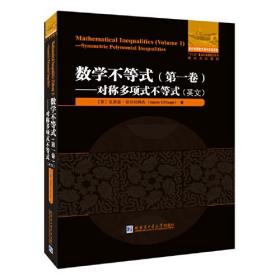


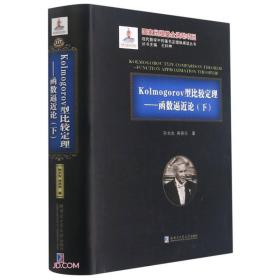
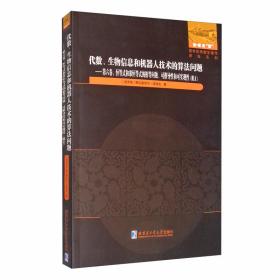

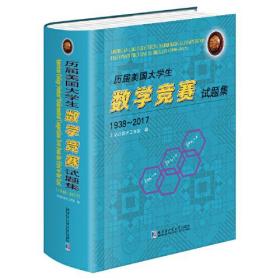
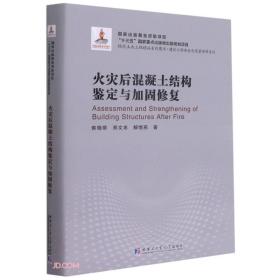
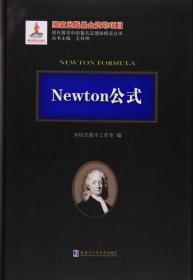
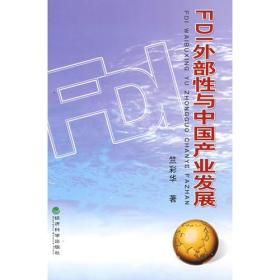













以下为对购买帮助不大的评价